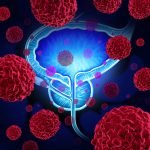Wayne Centrone, ND
It does not seem that a week goes by without one of my professional colleagues approaching me regarding opportunities in health care. For some reason, call it default or my position with a rather prominent medical clinic, I have become a de facto “expert” in professional opportunities for young ND physicians.
Invariably, my response to their inquiry comes back to one single recommendation: Invest in your graduate medical education.
We are truly facing a health-care crisis in this country. More Americans are uninsured than ever before, and more geographic areas are without providers to facilitate the meager health-care programs that are available.1
In many ways this tragic situation clearly has a silver lining. Unfunded programs are being revamped; poorly developed programs are being restructured with newer, more capable infrastructures; and greater and greater opportunities are emerging for physicians trained in all areas of medicine.
You may be asking youself, “How does this apply to graduate medical education?” The answer is quite simple: The greatest limitation to opportunities for NDs rests in our poorly developed residency programs. If we are ever to take advantage of the myriad of opportunities available for physicians to work in federally qualified health centers, county health departments and public-health institutions, we must embrace mandatory residency training for licensure.
At this point you may be thinking, “Fabulous idea, but where do we begin?” Our profession is woefully underfunded. Our medical schools are strapped with finding creative and efficacious routes of clinical education for our future physicians. And the federal government does not even recognize our existence on the landscape of physician-level providers. Sound a little overwhelming? Well, maybe not.
In the late 1960s, when faced with a similar array of issues and concerns as the naturopathic medical profession, the osteopathic community asked itself one salient question, “How can we make our physicians more successful?”2 The answer was to embrace a more formal relationship with the “conventional” medical paradigm by building bridges to residency training and third-party payer systems. (I have chosen to place the term “conventional” in quotations for I have a really hard time with its usage. It seems to imply that we, by virtue of the fact that our medical licensure is not “allopathic,” are unconventional. What is unconventional about the systematic approach to the diagnosis and treatment of disease, which is the model employed by all ND physicians?)
Okay, I know what some of you are thinking at this point, “I don’t want to be a part of the allopathic profession.” If you did you would not have gone to an ND medical school. Well folks, here are the hard-core facts: We are graduating record numbers of new doctors each year. Our new physicians are leaving medical school with debt loads never before envisioned (In fact, National College and Bastyr University recently expanded the allowable federal loan limits from a maximum of $18,500 per year to $38,500 per year.) Finally, the complexity and expectation that is the practice of medicine is far beyond the realistic accomplishments of a four-year medical training program. (More ND physicians are working in the role of primary-care physicians than ever before. This includes the full spectrum of life-cycle health care and all the expectations and responsibilities that go along with that care.)
Much to their credit, DOs realized this confounded array of issues early in their development. Many like to “beat up” the osteopathic profession for being co-opted under the allopathic model of care delivery, but a simple review of the facts shows just the opposite. More DOs are in primary care than any other medical provider. More DO medical schools have a curriculum that is solidly grounded in the philosophical tenets of their unique profession. The osteopathic model of care is extolled in the practice of osteopathic manipulative medicine (a board-certified specialty that receives Medicare and Medicaid remuneration).
Finally, osteopathic physicians are integrated into all specialties of health care. This integrative approach to the practice of medicine allowed for a broader dissemination of the DO philosophy into patient care within allopathic residency-training programs. This has allowed DO physicians to truly expand their influence and economic viability. Today, DOs are formidable players in the health-care model and represented in all levels of academic and administrative positions.
Imagine a time in the not-too-distant future when NDs will be on faculty at allopathic medical institutions teaching alongside their MD counterparts. Imagine a future when ND physicians are trained in all specialties of medicine_gynecology, dermatology, even surgery. Imagine a future that includes NDs working as physician-level providers in the Public Health Service Commissioned Corps. Imagine a future (someday maybe) when an ND is the surgeon general of the United States. The key to this very tangible future is graduate, medical education. In order to sit at the table with other physician-level providers we must be willing to match the “standard” of training that is expected for all doctors. In this world of fast-paced changes and ever-increasing expectations, formal postgraduate medical-education training should no longer be optional, but compulsory.
In 1889, Johns Hopkins Hospital instituted the first formal Graduate Medical Education (GME) program (a one-year internship). Within fifteen years, the American Medical Association (AMA) officially recognized the internship, and in 1914, its Council on Medical Education and Hospitals began approving internship programs. By the 1920s, the basic internship was generally perceived as part of the preparation for the general practice of medicine, and by 1959 an internship was required for licensure by 38 out of the then-existing 48 states.3
Until the 1940s, the internship was the final year of clinical training for most physicians. As medicine became increasingly specialized, longer training programs were developed to prepare physicians to practice the nuances of ever-demanding clinical specialties. After World War II, the trend toward specialization accelerated and the need for more robust post-medical school training programs became necessary. In 1940, a total of 5,120 residency positions (including all residency years but not the internship year) were being offered by almost 600 hospitals. By 1958, this had increased to more than 30,000 positions (all residency years) being offered by about 1,200 hospitals.3
Today, residency training is compulsory for all graduating MD physicians. Following graduation from a Liaison Committee on Graduate Medical Education (LCGME) approved medical school,l an MD is qualified to be a candidate for GME in the U.S. The Accreditation Council for Graduate Medical Education (ACGME) is responsible for the accreditation of post-MD training programs within the United States. Accreditation is accomplished through a peer review process and is based upon established standards and guidelines.4
Each year more than 16,000 new MDs match (participate in a national selection program to “match” with a given residency training) for ACGME-approved GME programs.5 Yet, there are some 24,000 actively accredited residency positions in the county.
These excess positions are left unfilled or are filled by graduates of foreign medical schools. As such, “foreign-trained” allopathic physicians have constituted up to 25% of all postgraduate medical education trainees in the country over the past decade. (The AMA counts, among its 194,000 physician members, including residents, a total of 31,000 graduates of foreign medical schools, some of whom are very active in the association’s affairs.)6
Yet foreign medical school graduates are not meeting the overwhelming need for physician-level staffing in inner cities and rural communities. If the institutions serving these areas are unable to recruit foreign-trained physicians for the residencies and staff practices that are generally shunned by graduates of American medical schools, they are forced to close or greatly curtail desperately needed services.
Representative Pete Stark (D-California) underscored the disconnection between an oversupply of physicians and the “millions of Americans [who] are poorly served. Rural communities and inner-city communities go begging for doctors, and minorities are underrepresented in the nation’s medical schools. I hope that Congress will not just deal with problems of physician oversupply, but will also address problems of mal-distribution and lack of access for so many of our fellow citizens.”7
Positions in small community hospitals in rural America, house staff positions at clinics and hospitals in inner-city communities, and primary care training positions in “undesirable” geographic locations go left understaffed and underutilized. The AMA reports fewer than 3% of U.S. medical-school graduates say they want to practice in a rural area.8 This represents a major short fall for the country’s health-care system_a system that counts in its $1 trillion-dollar budget some 45 million uninsured Americans.9 One great possibility for the American public and the naturopathic medical profession is to utilize ND physicians in such positions. How might this occur?
The first step in advancing opportunities for our profession will come from the restructuring of the ND medical school curriculum to reflect a “standard of education” that is the same for all graduates. By this I mean I do not wish to supplant the institutional priorities and approaches of each medical college, but to guarantee that the mission of every school includes teaching, research and patient-care training that prepares graduates for careers in primary-care medicine. One simple, and very tangible, move is ensuring that all ND medical schools are listed in the World Health Organization Directory of Medical Schools. The next step will be the continued investment in a lobby effort in Washington D.C. (much praise should go to the AANP’s current lobby efforts) to convince legislators to open Medicaid and Medicare remuneration to ND physicians. Finally, as a profession we will need to embrace a future that is very much different than that with which we currently practice.
Every great change has come with and through compromise. For many people compromises represent defeats. However, in this circumstance “compromise” represents a significant triumph; a triumph for the profession to move into a more powerful position to help influence and structure health-care policy and delivery; and a “compromise” to allow our young physicians to be more economically and professionally successful.
The health-care system in this country is changing. More Americans are seeking “alternatives” to care, more providers are seeking alternatives to delivery, and more opportunities are available than ever before.10 The key to our profession grabbing the “brass ring” lies in creating greater inroads to graduate medical education. The key to our survivability is to be both comprehensive and evidence-based. The future of naturopathic medicine lies in embracing standards, pursuing excellence, and the rigorous training of our medical students. We owe them every possible opportunity for success.
Wayne Centrone
References
1 McLellan F. Uninsured people in USA put a strain on health system. Lancet 2003;Mar 15;361(9361):938.
- Gevitz N. The DOs: Osteopathic Medicine in America. Baltimore, Md, Johns Hopkins University Press, 2004.
- Evolution of the Internship and the Residency: http://www.savethematch.org/history/before.aspx
- Accreditation Council for Graduate Medical Education website: http://www.acgme.org/acWebsite/home/home.asp
- Epstein AM. US teaching hospitals in the evolving health care system. JAMA 1995;273:1203-1207.
- Data are from the Association of American Medical Colleges: http://www.aamc.org/data/facts/start.htm
- Iglehart JK. The quandary over graduates of foreign medical schools in the United States. N Eng J of Med 1996;25;334:1679-1683.
- Croasdale, Myrtle. Admissions process aims to boost rural doctors. amednews.com. vol. 48, no. 5, February 7, 2005.
9.Iglehart JK. The American health care system–expenditures. N Eng J of Med 1999;340:70-76.
10.Institute of Medicine Report on Complementary and Alternative Medicine in the United States: http://www.iom.edu/report.asp?id=24487.





